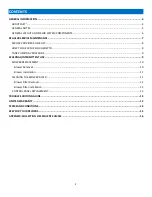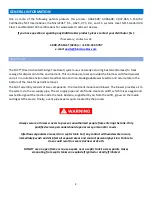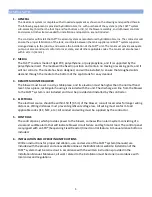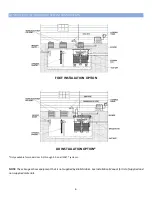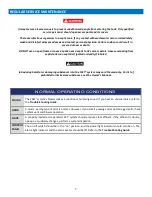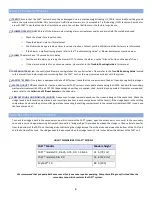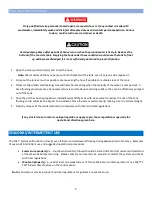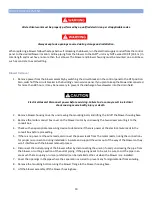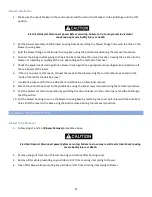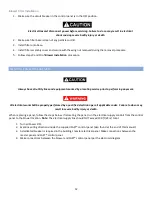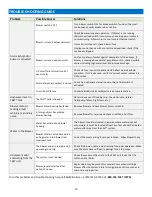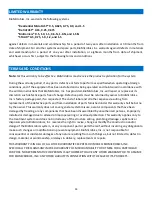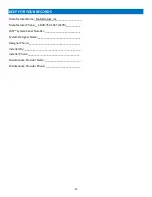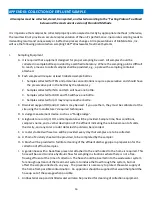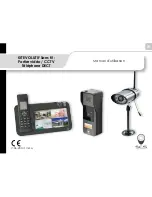
16
APPENDIX: COLLECTION OF EFFLUENT SAMPLE
All samples must be collected, stored, transported, and tested according to the “Testing Protocol” outlined
below and the most current version of Standard Methods.
It is imperative that samples be collected properly and analyzed correctly by appropriate methods; otherwise,
the results will not provide an accurate representation of the unit’s performance. Inaccurate sampling leads to
misleading results and unnecessary or ineffective process changes. All representatives of BioMicrobics, Inc.
will use the following protocol when sampling FAST® Wastewater Treatment Systems.
I.
Sampling Equipment
A.
It is required that equipment designed for proper sampling be used. All samples should be
collected in sample bottles provided by a certified laboratory. Where the sampling point is difficult
to reach, a means to collect samples shall be provided, e.g., a pole with a sampling container
attached.
B.
Each sample will require at least 3 labeled sample bottles.
1.
Samples collected for TKN and ammonia concentrations require a preservative and should have
the preservative put in the bottles by the laboratory.
2.
Samples collected for NO
3
and NO
2
will have one bottle.
3.
Samples collected for BOD and TSS will have one bottle.
4.
Samples collected for pH may require another bottle.
C.
Dissolved oxygen (DO) and pH meters may be used. If you use them, they must be calibrated at the
site using the manufacturer’s required techniques.
D.
A sludge measurement device, such as a “Sludge Judge”.
E.
A logbook to record pH, DO, and temperature will be provided. Sample time, flow conditions,
sampler’s name, and a verbal description of the effluent indicating the relative amount of solids,
the clarity, and any color or odor detected should also be recorded.
F.
A cooler stocked with wet ice will be provided every day that samples are to be collected.
G.
A Chain of Custody sheet will be provided, to be completed by the sampler.
H.
A brush will be provided to facilitate cleaning of the effluent discharge pipe in preparation for the
collection of effluent samples.
I.
A garden hose with a back-flow preventer attached to the end hooked to the home is required. This
hose will be used to induce hydraulic flow for sampling in situations where there is not a free-
flowing effluent at the time of collection. The hose should be inserted into the wastewater system
far enough upstream of the treatment system to induce the flow through the system, but not
affect the sample collected in any way. The preventer is necessary to protect the water supply of
the home from possible contamination. An apparatus should be supplied that would help hold the
hose up out of the sewage when possible.
J.
Antibacterial soap and distilled water will also be provided for cleaning of collection equipment.
Содержание HighStrengthFAST 1.0
Страница 2: ...2...


